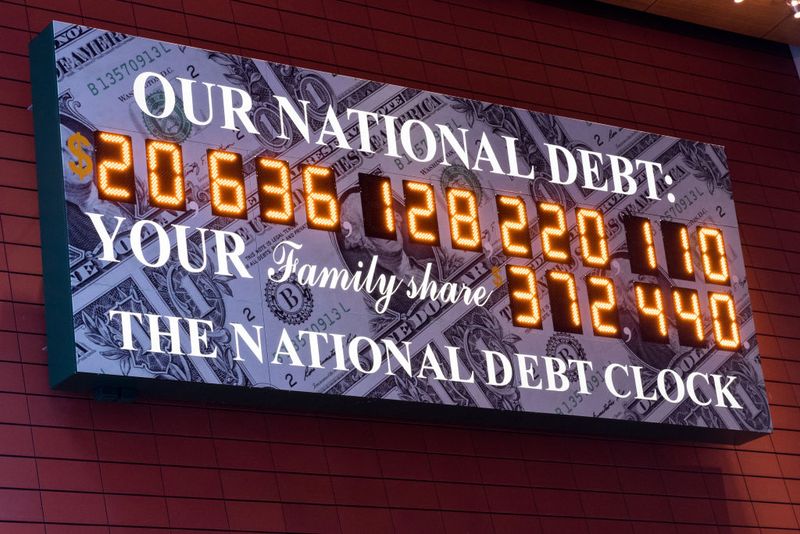You might know the numbers: The national debt now stands at $21.4 trillion, and debt held by the public—that is, debt owed to those outside the federal government—totals $15.7 trillion. As a share of the economy, the public debt is now 78%, compared with an average of 41% over the past 50 years. So the debt is large by historical standards, and rising rapidly, with deficits climbing toward $1 trillion a year and projected to stay above that level indefinitely.
But what do those big numbers mean? One way to understand them is to ask what it would take to stabilize the debt at its current level, or bring it back in line with historical averages. The congressional budget office examined those questions in a report published this week, Fiscal Times online reported.
CBO analyzed what it would take to achieve three potential targets:
- Bringing the ratio of federal debt to GDP down to its 50-year average of 41%
- Keeping the ratio at its current level of 78%
- Allowing the ratio to rise to 100% and then freezing it there.
The budget analysts then looked at what it would take to achieve each of those goals by 2033, 2038, 2044, and 2048.
Cut Spending, Increase Tax
To restore the debt to its 50-year average in 15 years would require lawmakers to cut spending and/or increase taxes by 3.9% of GDP annually, or $830 billion in 2019—about $2,500 per person in the US. The spending cuts or tax increases would grow from there as GDP grows, reaching $1.06 trillion (in 2019 dollars) in 2033.
That’s the most aggressive scenario CBO considered, but more modest debt-reduction scenarios and longer timeframes still require some significant spending cuts or tax hikes.
If congress wanted to get the debt to be at its current size as a share of the economy in 2033, it would have to raise taxes and/or cut spending by $340 billion next year, or about $1,000 per person, and keep those policies in place. By 2033, the tax hikes and/or spending increases would total $430 billion, or about $1,200 per person.
Bending the curve so that debt rises to 100% of GDP by 2033 (instead of the 105% currently projected by the CBO) would require a relatively modest $60 billion in deficit reduction in 2019 (or $200 per person), with that figure growing to $80 billion in 2033.
Bank Profits
American banks have never been more profitable. Helped by the GOP’s corporate tax cuts, the sector made a record $60.2 billion in net income in the second quarter of 2018, up 25% from a year earlier, according to data released Thursday by the federal deposit insurance corporation. The previous earnings record was $56 billion, set in the first quarter.
If tax rates had stayed the same, bank profits in the April-June period would have risen by $5.6 billion (11.7%) instead of $12.1 billion, the FDIC report says. In other words, the tax cuts boosted bank profits by a tidy $6.5 billion for the quarter.
Trump’s Policies Hurting
Business economists are less than bullish on the effects of President Donald Trump’s economic policies. A semiannual survey by the national association for business economics found that:
Tariffs are hurting: 91% of business economists surveyed say that the Trump administration’s current tariffs and threats of additional tariffs are having “unfavorable” consequences for the US economy.
Deregulation is helping, but maybe just in the short term: Nearly half (45%) say that the deregulatory steps the administration has taken so far have helped the economy, but 35% say the positive short-term effects will lead to negative long-term consequences.
An infrastructure package won’t happen next year: Nine out of 10 economists say that “the probability of a meaningful infrastructure package being enacted in 2019” is less than 50%.
The new corporate tax law is an improvement: About two-thirds say the GOP’s tax overhaul made the corporate tax system better “in terms of equity and efficiency.”
But the individual tax changes made things worse: Only 31% say the personal tax system will be better under the new law, while 54% say it will be worse, including 20% who say it will be “far worse.”
The tax cuts will boost growth this year: Nearly 40% say the tax cuts will increase GDP growth by a quarter to half percentage point. Another 37% see the tax law adding more than half a percentage point to GDP.
But the longer-term impact is much smaller: 54% say the tax cuts will help grow the economy over the next 10 years, though more than half of the economists who forecast a positive impact see it being fairly small–just 1 percentage point or less after 10 years. More than a third of economists say the tax cuts won’t add to growth or will slow in longer-term.
Tax and spending policies are juicing the economy too much: 71% say fiscal policy is too stimulative, up from 52% in February.
The deficit is too high: 81% say that fiscal policy should aim to reduce the deficit as a share of GDP compared to the Congressional Budget Office’s projections for the next 10 years—but only 7% believe that the most probable tax and spending policies will accomplish that reduction. More than 80% say that tax and spending policies will probably increase the deficit as a share of the economy even beyond what CBO projects.
The survey collected responses from 251 NABE members from July 19 to August 2.


